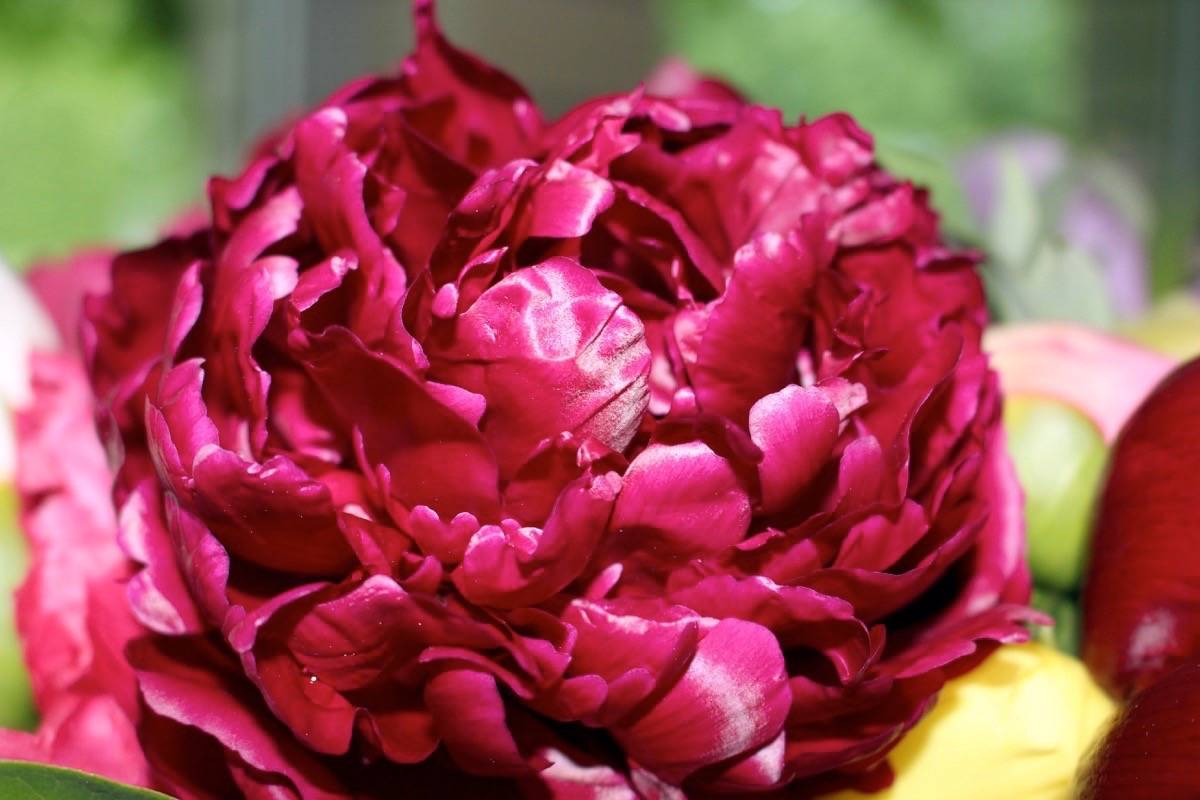Agriculture in Alaska has seen growth and increased interest in recent years, however, growers fear proposed cuts outlined in Gov. Mike Dunleavy’s budget could curb business in the industry.
Wednesday, the House Department of Natural Resources Subcommittee voted down around 30 cuts to programs and institutions that support the agricultural industry, including the Alaska Grown program and a number of inspectors. Roughly, $1.2 million is proposed to be cut from the Division of Agriculture. However, there are plenty of opportunities for the cuts to find their way back into the budget as the various committees take their turn working on the proposed budget, Rep. Geran Tarr, D-Anchorage, said.
“We’re hearing from Alaskans from all over the state about how important this is,” Tarr said. “There has been so much growth in agriculture and so much positive momentum.”
The governor’s proposed budget would reduce funding to the state Division of Agriculture. The state agricultural veterinarian and the Agriculture Revolving Loan Program are on the chopping block as well.
The state’s last dairy farm, Havemeister Dairy in Palmer, could also shut down if the proposed budget is passed. A cut to the state’s dairy sanitation program would prohibit the dairy from selling its milk in stores.
The potential cuts are now in the hands of the House Finance Committee.
Dr. Pat Holloway, who taught horticulture at the University of Alaska Fairbanks for 30 years, is touted as the godmother of Alaska’s peony industry. She recognized and organized the opportunities peonies had in Alaska. She said the depth of cuts to the state, especially agriculture is surprising.
“Having all of this pulled out from under the rug is devastating,” Holloway said.
Holloway said the Division of Agriculture gets a “pitifully small budget as it is,” and that much of the state’s research in agriculture is funded through passthrough money, which is money from the federal government, that is appropriated through a state agency.
The Kenai Peninsula is home to 30 percent of the state’s peony farms, according to the Alaska Peony Growers Association. Holloway said there are more than 135 growers in Alaska at various stages in their farms.
Holloway said the Alaska Peony Growers Association, in collaboration with the Alaska Department of Agriculture, received a $3 million grant to study thrips infestation of peonies in Alaska. Thrips are small insects that have the potential to cause a foreign country to block all shipments to that country. The state must contribute $100,000 toward the cost of the research. The proposed budget returns the grant to the federal government and puts the $100,000 of state funds to other use.
The proposed budget also looks at cutting plant material inspectors, which are required to ship peonies worldwide and to California. Without these inspections, Alaska peonies would be halted from reaching the world market.
“Getting in these world markers would be a game changer for Alaska,” Holloway said. “If we don’t have inspectors, well, dig up the peonies then.”
Wayne Floyd, a peony grower in Kenai, just returned to the peninsula after advocating for agriculture in Juneau this week. Without plant material inspectors, Floyd could no longer send his flowers to Vietnam, where his Alaska-grown peonies are sought after.
He said the proposed cuts would also put a serious setback on Alaska’s effort to be more food secure.
“It would put the brakes on the turnaround we’ve been doing,” Floyd said.
Less than 5 percent of Alaska’s food is grown and raised in the state, according to research commissioned by the Alaska Department of Health and Social Services. The rest comes from the Outside, often through the Port of Alaska in Anchorage.
As recent as 1955, Alaska grew 55 percent of its food, according to the United States Division of Agriculture Alaska Farm Service Agency.
Farming in Alaska took off after President Roosevelt’s New Deal in 1935, which brought just more than 200 families from the Midwest to farm in the Matanuska-Susitna Valley.
An increase in local food availability means potentially more money in the local economy. Alaskans spend around $2 billion on food, most of which is imported, according to the 2017 Central Peninsula Agricultural Market Analysis. Peninsula residents spend an estimated $31 million every year on fresh produce alone, the analysis said. Assuming every dollar spent on locally grown produce could generate an additional $0.34 in economic impact over purchases of products grown outside the area, even small increases in local food purchases can generate economic growth. Kenai Peninsula residents could generate an additional $1.1 million in the local economy by purchasing just 10 percent of their produce from local growers, according to the analysis.
Floyd said in the last five years, the Legislature has made progress in the industry, including an increase in interest and the creation of more than 40 farmers markets across the state.
Reducing that legislative support and state funding for agricultural programs may cost the state’s farms important resources, according to a report by the Alaska Food Policy Council.
“Decline in agricultural production from the 1950s was mirrored by a decline in support for agricultural education,” the report said. “State support for agricultural research had virtually disappeared by the mid-1970s, and despite a brief resurgence with pipeline revenues, has again suffered neglect both from the state and federal governments. Research requires adequate funding to be effective in its role as long-term support.”
Tarr said she and her staff have compiled testimony from more than 150 Alaskans, from more than 25 legislative districts who support agriculture.
“I’ve heard story after story after story from farmers,” Tarr said.

